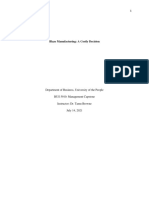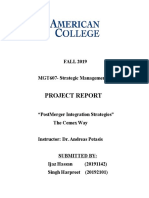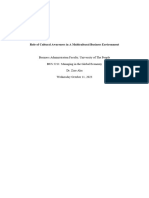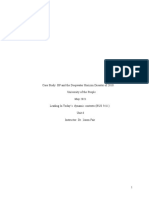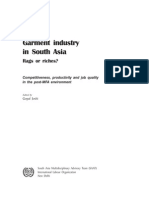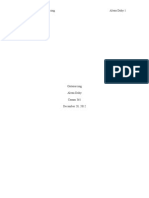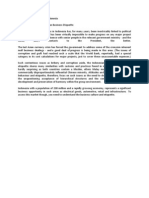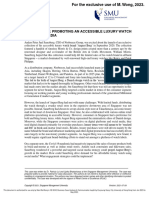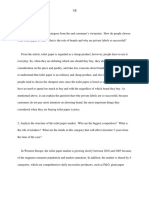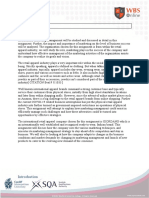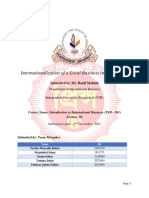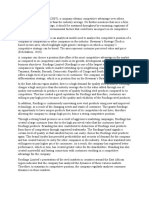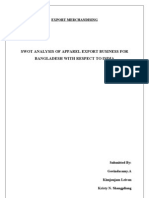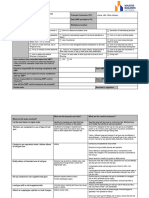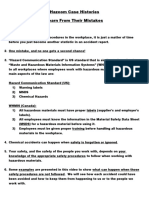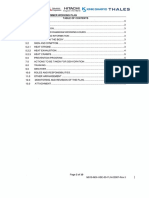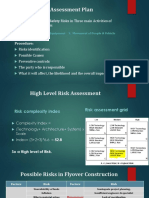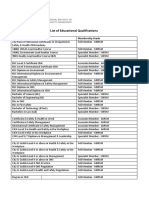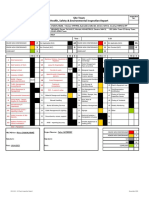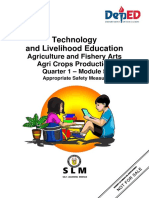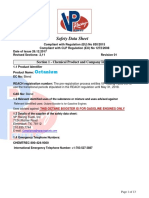Ethical Report
Submitted to:
Dr. M. Shahedul Alam
Department of Management
School of Business
North South University
Group 1
Submitted By:
Ashiqul Karim Bhuiyan
132-0534-030
Abu Khaled
111-0581-530
Shah MD Tajder
113-0289-030
Tariqul Islam
111-0327-030
Gulshan Zareen Alam
121-0269-030
Subrata Rudra
101-0681-030
�1|Page
Executive Summary
In Bangladesh there are lots of industries which perform well in the competitive and
international market and RMG sector is the top most successful industry in Bangladesh. The
reputation of Bangladeshi RMG sector spread all over the world in terms of the materials and
quality of our garment product. Bangladesh currently holds the second position after China in
RMG sector in terms of export readymade garment products. Form the RMG sector
Bangladesh earn highest foreign revenue comparing with other industries. Our strength in
RMG sector is our good quality of products. Bangladeshi garment product is very much
popular and demanded in many foreign countries like USA, Canada, Italy, China, India,
Thailand, Indonesia and South Korea Etc. which gives our RMG sector good competitive
edge. Investors are investing more in RMG sector in Bangladesh. In last 20 years the growth
of RMG sector is massive. Many foreign buyers are showing more interest in Bangladeshi
garment products and some of them shifting their business in Bangladesh for better business.
The factor for the success in the RMG sector is the cheap labor cost and availability of raw
materials. In Bangladesh RMG sector will go further if the Bangladeshi government take
some initiative action and enforce some law regarding to unethical activities of RMG sectors.
These types of law attract the foreign buyers to invest more in Bangladeshi RMG sector. This
will help Bangladeshi RMG sector to grow more and the overall size of the industry will
increase. Some important issues which is very unethical like child labor, low compensation,
health and safety issues and working conditions in the RMG sectors. So government should
focus on those issues and they need to set up a committee to investigate and monitor those
unethical practices occur in RMG sectors and if anyone violates those rules and regulation
they should get highest level of punishment. If all these rule and regulations successfully
established by the government then we can hope that there will less unethical practices in the
RMG sector and this will also helps to attract foreign buyers to invest in Bangladesh. If
Bangladeshi government established those rules and regulations we can hope near future our
RMG industry will be the number one in terms of exporting and gain more reputation in the
foreign market.
�2|Page
Introduction
The RMG sector began in the western world in the 1950s. In order to restrict the import of
RMG from developing to developed countries the Multi Fiber Agreement (MFA) was passed
in 1974. This agreement controlled the world trading of garments and textiles from 1974 to
2004. The agreement imposed a strict quota on the items that could be exported to the
developed countries, with the export rate increasing 6% every year.
Value Chain
The global textiles and garments industry forms an important component of world trade
flows, particularly for some developing and least developed countries where clothing
accounts for a large proportion of total exports. The export and import of RMG sector acts as
a huge source of money inflow. In 2004, world exports of textiles were valued at $195bn and
of clothing at $258bn, representing 2.2% and 2.9% respectively of total world merchandise
trade. Developing countries produce half the worlds textile exports and nearly three-quarters
of the worlds clothing exports. A distinctive feature of the clothing industry is the number of
countries highly dependent on garment exports, even though the absolute value of those
exports is not high in global terms. In 2004 clothing provided more than 40% of total
merchandise exports for Cambodia, El Salvador, Bangladesh, Sri Lanka, Mauritius and
Lesotho. Such reliance on the garments industry for both jobs and export revenues makes
these countries, and their populations, very vulnerable to adverse shifts in trading patterns.
For clothing, the EU is again the biggest exporter (including intra-EU exports), followed by
China with a 24% share of world garments exports. Although all other countries lag far
behind, Turkey, Mexico, India, Indonesia, Bangladesh, Thailand, Vietnam, Tunisia and
Pakistan all feature among the top 15 clothing exporters. Overall, Asia accounted for 46.8%
of world clothing exports in 2004. The major importers of clothing are the EU and the US,
with Japan trailing in third place. After more than forty years of import quotas, the textile and
clothing sector will become subject to the general rules of the General Agreement on Tariffs
and Trade from 1 January, 2005. Liberalization has become controversial because both
textiles and clothing contribute to employment in developed countries, particularly in regions
where alternative jobs may be difficult to find. In the European Union, for example, the
sector is dominated by small and medium-sized enterprises concentrated in a number of
regions that are highly dependent on this sector. The objective of this paper is to assess the
likely impact of liberalization, taking into account recent technological and managerial
�3|Page
developments in the sector, and focusing on recent developments in supply chain
management in the clothing and textile sectors. The clothing industry is labor-intensive and it
offers entry-level jobs for unskilled labor in developed as well as developing countries. Job
creation in the sector has been particularly strong for women in poor countries, who
previously had no income opportunities other than the household or the informal sector.
Moreover, it is a sector where relatively modern technology can be adopted even in poor
countries at relatively low investment costs. These technological features of the industry have
made it suitable as the first rung on the industrialization ladder in poor countries, some of
which have experienced a very high output growth rate in the sector (e.g. Bangladesh, Sri
Lanka, Vietnam, and Mauritius).
Degree of concentration
The sales of clothing has increased to a great extent in the past decades and the garments
sector are increasing rapidly in the developing countries than the developed countries as the
labors are much more cheap in the developing countries than the developed ones. Also, the
financial performance of this sector is very good and the degree of concentration for this
industry is very high as there are huge number of competitors everywhere in the world
offering the cheapest labor cost which will help the product to be less costly.
Quota system
It is just over two years since the phasing-out of the global system of quota controls which
governed trade in the textile and clothing industry. That industry generates US$479 billion in
world exports and accounts for a 4.6% share in global merchandise exports. The quota system
and policy developments since its demise illustrate the highly selective and targeted nature of
production and market relations in the industry. Although 1st January 2005 was supposed to
mark the end of the quota system for all countries and was expected to unleash massive
adjustment challenges for a number of countries, quota elimination has shown a mixed result
so far. Moreover, countries that have lost out the most had seen their exports decline earlier,
which means that their dismal performance cannot merely be ascribed to the quota phase-out.
�4|Page
Barriers to entry
Many developing country garment producers were simply unaware of how key information
technologies were changing the patterns of trade in textiles and garments. Recent research
shows low online exchange of documents and only limited digitization and integration of
commercial activities among developing country producers. There are several obstacles that
hinder the uptake of ICT in low-cost supplier countries, such as:
Lack of knowledge about available technologies
Low awareness about the expectation of buyers in the US and EU
Inability to access capital to fund the necessary investment
Shortcomings in the wider business environment
Low levels of existing IT equipment and lack of training
Cultural barriers to information sharing
Lack of awareness of upcoming technologies.
�5|Page
Comparison and consequences of ethical standards of RMG sector in
Bangladesh with global context
Minimum wage rate: Although readymade garments sector of Bangladesh has achieved
second spot in terms of highest number of garments products exporting but there are exists
some serious drawbacks as compare to other leading countries in RMG sector. There is a
huge gap in labours wage rate in RMG sector compared to other competitor countries such as
China, Italy, and Hong Kong. Government of Bangladesh has set up wage rate for the RMG
industry fixed Tk930 as the minimum wage in 1994, raising this to Tk1,662 in 2006 and
Tk3,000 in 2010 (Rashid, 2013). The top exporting country of RMG products China has to
pay average wages from $400 to $500 a month compared to $70 to $100 in Bangladesh
(Report, 2012).
Source: ILO (Luebker, 2014)
This wage rate comparison published by ILO represents a clear picture that minimum wage
rate paid in RMG sector in Bangladesh much lower than other countries. Also there is no
differentiation in wage rate between skilled and unskilled labor. It provides huge lack of
motivation factor for skilled labors for trying to use his/her full potential of productivity. In
�6|Page
fact this lacks of incentives to work more efficiently eventually make less value from
economic perspective. This unequal and low wage structure is one of the reason for low
productivity of RMG sector in Bangladesh compared to other regional countries. BGMEAs
one of the pilot project has achieved results that productivity can be increased by 20% - 35%
if the process follow international benchmark including higher wage rate (Stotz, 2009).
Another concerning matter is that the cost of living is reaching sky high day by day in
Bangladesh but the wage rate in RMG sector are not designed to match expenditure structure.
This mismatch between wage and living cost results in workers trade union disputes and
regular violent movements for raising wage rate. In 2013, two workers died after police
opened fire on laborers as they exited the GMS Composite Knitting Industry in Gazipur in
support of the labor unions movement for minimum $100 wage rate monthly (WRP, 2013).
So the disrupts that occurs due to poor ethical practices in terms of wage rate in RMG sector
of Bangladesh are summarized below:
Figure 2 Consequences of poor ethical practice in terms of RMG sector in Bangladesh
Low &
undifferentiated
wage rate compare
to other countries
Lacks incentives
for increasing
Productivity
Workers
dissatisfaction
Frequent Labour
disputes and
Strikes
Safety Issue: Bangladesh were far behind on the safety issues in terms of ethical perspective
few years ago. Especially events like Tazreen Fashion factory and Rana Plaza incident due to
lower occupational safety has created a global concern for unethical practice. A fire ripped
through the Tazreen Fashion in November 2012 which took lives of about 117 man and also
200 people got injured. More recently, the collapse of Rana Plaza in Savar at April 2013
killed 1113 workers. This shockwave stresses ILO to take structural, fire and electrical safety
�7|Page
inspection of 3508 factories out of 6330 (4300 under BGMEA & 2030 under BKMEA) with
Bangladesh Accord on Fire and Building Safety and the Alliance for Bangladesh Worker
Safety (ILO, 2013). The Department for Inspection of Factories and Establishments (DIFE)
has been rebuild with new and effective functionalities in 2014. Integrated training programs
has been regularly arranged by ILO and DIFE to build on the capacity of inspections. The
inspectors are rigorously trained in labor market-related policies and programmes,
Occupational Safety and Health (OSH), International Labor Standards and Bangladesh Labor
Laws. This integrated inspection has inspected 3496 factories selected by Accord and
Alliance in 2013 to investigate for proper fire and building safety. They also shut down 36
factories for unethical practices and declared unsafe less than 2% factories (Akter, 2015).
Figure 2: Current Situation of Safety Issue by Standardizing into Global Practises
To be
inspected
3508
Inspected 3496
Safety for Fire and
Building Inspection by
Accord
Declared unsafe
less than 2% and
shut down 36
�8|Page
Law Issue
The legislature has neglected to implement the laws it has on the books. The work law was
Changed in 2006, yet at the same time has a few genuine inadequacies, including the
wholesale avoidance of Numerous classes of specialists, high edges on the base number
required to shape a union, Confinements on the privilege to pick their own pioneers,
limitations on aggregate haggling and a few on the privilege to strike. The ILO yearly write
about Bangladesh keeps running for a few pages, inventorying various insufficiency in law
and by and by.
Welfare
Washing Facilities
Fast guide apparatuses
Shelters
Canteens
Rooms for youngsters
Working Hours
Weekly hours
Weekly occasion
Compensatory week by week occasion
Daily hours
Intervals for rest or dinners
Spread over
Night shift
Prohibition of covering movement
Extra stipends for after some time
Those are the specific criteria which are mention in the factories act 1965. It is true that most
of
These sections of law are violated by the most garment manufacturer of the country.4
The percentages of violating law in garments factories are given below:
Completely disregarded 31.37%
�9|Page
For the most part disregarded 43.13%
In part Violated-19.61%
Not disregarded 05.89%
"Labour Behind The Label". Labour Behind the Label. N.p., 2016. Web. 13 Mar. 2016.
Environment Issues
An unnatural weather change is one of the significant worries of the natural researcher of the
Cutting edge time. In the prior time there was no a wonder such as this called a worldwide
temperature alteration. By the Start of 21st century individuals came to think around another
issue called an unnatural weather change. The unnatural weather change is occurring for the
over the top measure of vicinity of carbon dioxide noticeable all around. There are some
criteria in working condition. Each business will undoubtedly give sound
Working environments for their employees according to different section of the factor is act
1965.
Cleanliness
Disposal of wastes and effluents
Ventilation and temperature
Dust and fume
Lighting
Drinking water
Workers Right Issue
The piece of clothing industry is by a wide margin the nation's most imperative producer,
gaining about $5 billion yearly and representing around 66% of all fares. Bangladesh has
�10 | P a g e
Around 2,500 piece of clothing manufacturing plants with up to 10 million occupations
subject to it specifically or by implication. Among them 80% are ladies.
They have some rights which are given below:
Right to compensation
Right to leaves and occasions
Right to welfare
Right to pay
Right to relaxation and diversion
Right to medicinal offices
Right to support in exchange union
Right to cures under law
"Sustainable Trade And Environmental Concerns In Bangladesh".
Ruchichowdhury.tripod.com. N.p., 2016. Web. 13 Mar. 2016.
�11 | P a g e
Major ethical Consideration
RMG sectors are the main sectors which earn the largest foreign currency. In Global market
Bangladesh has a good reputation on this industry. Bangladesh produced good quality RMG
product and charged lower price than other countries. RMG sectors plays a vital role in the
economy of the country so, in the global context Bangladesh RMG sector is a very important
industry.
The key issues in RMG sectors of Bangladesh are given there:
Wage Issues: In RMG sectors the wage rate of workers is relatively low. Workers dont get
the minimum wage which is required to maintain their daily life. Unemployment is a big
problem in this country. Most of the people are unemployed and they have no other option to
do any other job. So forcefully they work in this sector. In June 2006, the minimum wage of
TH. 1662.50 were fixed when the cost of living was also lower than now1. Working strike is a
common scenario on this industry. The workers of RMG industry have been creating violence
on the form of procession, vandalizing and blocking the roads to hike their minimum wage,
attendance bonus and ensure other facilities. Problem is, the owners of the garments industry
always try to increase their profit by lowering the wage rate so they pay a lower wage to their
workers. Even many garments industry does not timely pay workers salary, bonus and other
facilities. So during any festive like Eid they strike and block the road. As a result people
who are not related to this industry also suffer a lot. Now the salary structure is better than
before. Workers demand TK. 8000 salary but RMG minimum wage set at TK. 5,300 with
5% of basic as yearly increment by government-formed wage board2.
Child labor Issues: According to Labor Law, child labor means workers who are under 18
totally illegal in any business industry. But many garments industries are using this child
labor on their business operations. Because child labor wage rate is lower than adults
worker. Also many industriesare not giving them proper bonus and overtime wage. So
owners only think profit margin and violate the law and also recruit child labor. Many foreign
buyers cancelled the contract only because of this child labor issues. Though this child labor
http://www.dhakatribune.com/op-ed/2013/sep/26/wages-rmg-industry
http://www.thedailystar.net/will-rising-minimum-wage-affect-the-rmg-sector-44091
�12 | P a g e
provides a short term profit but it has also a long term effect on overall industry. Some
garments owners are serious about this fact. So they obey the law and never recruit any child
labor on their business industry.
Health and safety Issues: According to global perspective, health and safety is a serious
issue in every industry not only RMG sector. There are lots of accident was happened in
Bangladesh because of poor building infrastructure, old machine, lack of knowledge, fire and
poor working condition etc. Many factories do not meet the minimum standard prescribed in
and construction legislation. But Factory Rules 1979 make clear about building and
construction issues3. Rana plaza not follows this law. Building infrastructure was not so good.
More 1130 people were death because of building collapse. After fall of Rana plaza the
government now little bit conscious about health and safety issue4. Some health and safety
related problems are given there:
1. Hygienic working environment in the industry
2. Sexual harassment by lineman, manager and supervisor to the female workers
3. No baby care center for female workers
4. Not enough toilet and washroom facilities
5. Lack of pure drinking water
6. Lack of knowledge about the safety and comfort of female workers
7. Not enough fire exit doors
8. Not enough air circulation of industry building etc.
Technological Issues: Technologically development always reduced the cost and makes the
innovation on any industry. Bangladeshi RMG sector now continuously improve their
technology. The major portions of foreign currency are earned on this industry.
Technological development provides the facility to produced product more effectively and
efficiently and also need less man power. So the overall cost is reduced. Innovation is only
possible if company have modern technological machine. Technological development
http://www.academia.edu/5098551/Compliance_of_Safety_Health_and_Welfare_in_RMG_of_Ban
gladesh
4
http://www.garmentsmerchandising.com/readymade-garments-industry-of-bangladesh/
�13 | P a g e
provides a great benefit on RMG sector. Only one disadvantage is many workers lost their
job because all is now on automation process so less man power is required.
Environmental Issues: RMG industries polluted the environment especially polluted water
and air. There are lots of environmental laws in Bangladesh but the implementation of those
laws is relatively low. So many companies transfer their factory from aboard to this country.
Because they have not followed any stick environmental law so they think Bangladesh is a
suitable place for doing business. RMG factories are through their wastages like washing
water on the river which are causing environmental hazard. Borigonga and Tura rivers are
example of environmental pollution. Industry should refine the washing water before they
through it the rivers. RMG industry also produced the carbon dioxides which are causing the
green house effects. Still now government of Bangladesh not focused on this issue.
S.W.O.T. Analysis of RMG Sector of Bangladesh
Strengths
One of the strengths behind the success of RMG of Bangladesh is the specialized
workers and lowest minimum wage of workers compared to other countries in the
region.
Proper utilization of previous experience which cause the per unit cost to go down
Easier to expert because of geographical advantage
Weaknesses
The major sub-sector weakness of RMG sector is dependence on other for row
material, low productivity, poor infrastructure, political instability and limited
knowledge of international marketing information.
Lack of proper safety measures
Lack of technological know-how of the works
Opportunities
�14 | P a g e
The greatest opportunities is on the unlimited market outside Bangladesh.
Favorable for RMG sector
Utilization of huge labor force
Threats
Other countries that can provide RMG products at lower cost may become threat to
the Bangladeshi garments in future.
Lack of reliability of forging important due to the workplace environment
Job dissatisfaction of the employ because of lower wages
Technological advancement of competitors like India, Pakistan
Core Competencies of Bangladeshi RMG Sector
The core competency that is the main reason behind so much growth of Bangladeshi RMG
sector is the lowest wages rate than any other RMG producing country. But countries like
Vietnam and China are overcoming this through technological advancement.
We are suggesting the RMG owner to refocus their core competency and instead choosing the
specialization in producing RMG products.
Labor Strike in the RMG Sector of Bangladesh
Labor strike is very common scene in the garments sector of Bangladesh. Labors are going for
strike as they dont get their wage at proper time. Labor strike in RMG sector of Bangladesh is
the result of both the dissatisfaction of labor working place environment and also the misuse
of labor unions. The Government in not being able to regulate labor unions and the unions
leaders are using such a weakness in a negative way.
https://libcom.org/tags/bangladeshi-garment-workers
�15 | P a g e
Analysis & Recommendation
Bangladesh economy at present is more internationally coordinated than whenever
previously.
The Multi Fiber Agreement eliminate will prompt more proficient worldwide realignments of
the
Pieces of clothing and Clothing industry. The eliminate was required to have negative effect
on the economy of Bangladesh. Late information uncovers that Bangladesh assimilated the
stun effectively what's more, in reality RMG sends out became fundamentally both in FY06
and (particularly) in FY07. Because of a number of steps taken by the business, Bangladesh
still stays focused in RMG trades indeed, even in this post eliminate period. Our Garments
Industries can enhance their position in the world guide by diminishing the general issues.
For example, administration work strife, appropriate administration arrangement, proficiency
of the chief, viable time plan for the item, legitimate vital arrangement and so forth.
Government moreover have some commitment to upgrade the condition by giving genuine
system to guarantee the bits of dress business undertakings, handle the license issue, quickly
stacking office in the port, giving honest to goodness environment to the work, keep the
business free from all kind of political issue and take brassiness. Credit must be given when
the business fall in need. To be an upper position holder on the planet Garments Sector it is
extremely unlikely but take after the above proposals. We trust by keeping up appropriate
administration and strategy methodologies our nation will take the pinnacle position in future.
�16 | P a g e
Conclusion
The Ready-Made Garments (RMG) industry occupies a unique position in the Bangladesh
economy. It is the largest exporting industry in Bangladesh, which experienced phenomenal
growth during the last 25 years. By taking advantage of an insulated market under the provision
of Multi Fibre Agreement (MFA) of GATT, it attained a high profile in terms of foreign
exchange earnings, exports, industrialization and contribution to GDP within a short span of
time. The industry plays a key role in employment generation and in the provision of income
to the poor. To remain competitive in the post-MFA phase, Bangladesh needs to remove all the
structural impediments in the transportation facilities, telecommunication network, and power
supply, management of seaport, utility services and in the law and order situation. The
government and the RMG sector would have to jointly work together to maintain
competitiveness in the global RMG market. Given the remarkable entrepreneurial initiatives
and the dedication of its workforce, Bangladesh can look forward to advancing its share of the
global RMG market. Rather many efforts should be extracted from the industry as well as the
government to enable international marketers to be successful by adjusting all uncertainties
and in addition to discovering all opportunities
�17 | P a g e
References
Akter, M. M. K., 2015. A Good 2015 and a Promising 2016 for the RMG Sector - See more at:
http://www.textiletoday.com.bd/a-good-2015-and-a-promising-2016-for-the-rmgsector/#sthash.qBq1qGPb.dpuf. Bangladesh Textile Today, December.
ILO, 2013. ILO report presents a path to sustainable growth in Bangladesh, s.l.: ILO.
Luebker, M., 2014. Minimum wages in the global garment industry, Bangkok: ILO.
Rashid, M., 2013. Wages in the RMG industry. Dhaka Tribune, 26 September, p. 11.
Report, S. B., 2012. Workplace safety must for Bangladesh to become RMG leader. The Daily Star, 11
December.
Stotz, D. D., 2009. Raising RMG industry standards. TEXTILE TODAY MAGAZINE, July.
WRP, 2013. STRIKING GARMENT WORKERS SHOT AND KILLED IN BANGLADESH!. Workers
Revoulation Party, 21 November.
Wikipedia. (2016). History of clothing and textiles. [online] Available at:
https://en.wikipedia.org/wiki/History_of_clothing_and_textiles [Accessed 13 Mar. 2016].
Wikipedia. (2016). Clothing. [online] Available at: https://en.wikipedia.org/wiki/Clothing [Accessed
13 Mar. 2016].
Investopedia. (2010). Multi-Fiber Arrangement (MFA) Definition | Investopedia. [online] Available at:
http://www.investopedia.com/terms/m/multi-fiber-arrangement.asp [Accessed 13 Mar. 2016].
Southasiajournal.net. (2016). The RMG Sector of Bangladesh: Problems and Survival Strategy South
Asia Journal. [online] Available at: http://southasiajournal.net/the-rmg-sector-of-bangladeshproblems-and-survival-strategy/ [Accessed 13 Mar. 2016].



